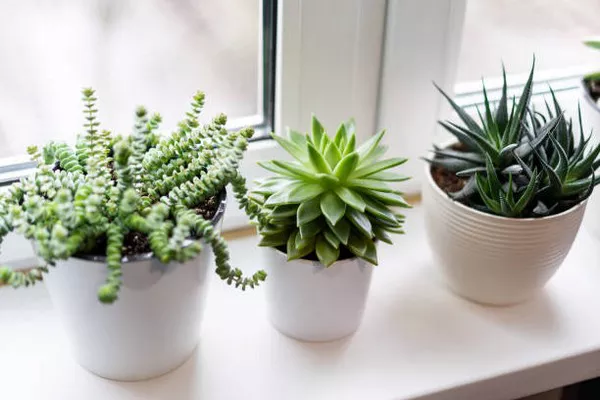Succulents have surged in popularity in recent years, adorning homes, offices, and gardens with their unique shapes and vibrant colors. Renowned for their low maintenance requirements and resilience, succulents have earned a reputation as the go-to plant for busy individuals or those new to gardening. However, beneath their seemingly effortless beauty lies a nuanced world of cultivation that demands attention to detail and careful consideration. In this comprehensive guide, we delve into the question: How hard is it to grow succulents?
Understanding Succulents:
Before diving into the intricacies of succulent care, it’s essential to understand what sets these plants apart. Succulents are a diverse group of plants characterized by their ability to store water in their leaves, stems, or roots, allowing them to thrive in arid environments. This unique adaptation enables succulents to withstand prolonged periods of drought, making them well-suited for both indoor and outdoor settings.
Factors Influencing Succulent Growth:
Several factors influence the success of succulent cultivation, ranging from environmental conditions to proper maintenance techniques. Understanding these factors is crucial for aspiring succulent enthusiasts to achieve optimal growth and longevity.
1. Light: Succulents require ample sunlight to thrive. While they can tolerate some shade, insufficient light may lead to etiolation, a condition characterized by stretched, elongated stems and faded coloration. Ideally, place succulents in bright, indirect sunlight for several hours each day to promote healthy growth.
2. Watering: One of the most common mistakes in succulent care is overwatering. Succulents are adapted to dry conditions and are susceptible to root rot if left in consistently moist soil. Allow the soil to dry out completely between waterings, and ensure proper drainage to prevent waterlogged roots.
3. Soil: Well-draining soil is essential for succulent cultivation. Avoid heavy, compacted soils that retain moisture, opting instead for a specialized succulent or cactus mix. These blends typically contain ingredients like sand, perlite, or pumice to promote drainage and aeration.
4. Temperature: Succulents thrive in warm, temperate climates and are sensitive to extreme cold. Most succulent varieties prefer temperatures between 60°F and 80°F (15°C to 27°C) and may suffer damage or die if exposed to frost or prolonged periods of freezing temperatures.
5. Humidity: While succulents are adapted to arid conditions, they may struggle in environments with high humidity, particularly if airflow is limited. Adequate ventilation helps prevent fungal diseases and promotes healthy transpiration, aiding in water regulation within the plant.
Common Challenges in Succulent Care:
Despite their reputation for resilience, succulents are not without their challenges. Several common issues may arise during cultivation, requiring prompt attention to prevent further damage.
1. Overwatering: Perhaps the most prevalent issue among succulent growers, overwatering can quickly lead to root rot and eventual plant death. Signs of overwatering include yellowing or mushy leaves, wilting, and a foul odor emanating from the soil. To remedy overwatering, allow the soil to dry out completely and adjust watering frequency accordingly.
2. Underwatering: While succulents are drought-tolerant, they still require regular watering to thrive. Symptoms of underwatering include shriveled or wrinkled leaves, wilting, and leaf drop. To revive an underwatered succulent, thoroughly water the plant until moisture drains from the bottom of the pot and adjust your watering schedule as needed.
3. Pests: Succulents are susceptible to pests such as aphids, mealybugs, and spider mites, which can damage foliage and stunt growth if left unchecked. Inspect plants regularly for signs of infestation, including small insects, webbing, or sticky residue on leaves. Treat affected plants promptly with insecticidal soap or neem oil, and isolate heavily infested specimens to prevent the spread of pests.
4. Disease: Fungal and bacterial diseases can affect succulents, particularly in humid or poorly ventilated environments. Common diseases include powdery mildew, root rot, and fungal leaf spots. Practice good sanitation by removing dead or diseased plant material, and avoid overhead watering to minimize moisture on foliage.
Tips for Successful Succulent Cultivation:
While growing succulents may present challenges, following these tips can help maximize your chances of success:
1. Choose the Right Plants: Select succulent varieties suited to your climate and growing conditions. Research the specific requirements of each species to ensure compatibility with your environment.
2. Provide Adequate Drainage: Use pots with drainage holes and well-draining soil to prevent waterlogged roots. Consider adding a layer of gravel or perlite to the bottom of pots to improve drainage.
3. Monitor Light Exposure: Place succulents in a location with sufficient sunlight, rotating pots periodically to promote even growth. Supplement natural light with grow lights as needed, especially during the winter months or in low-light environments.
4. Establish a Watering Routine: Develop a consistent watering schedule based on environmental factors and plant needs. Avoid watering on a strict calendar schedule and instead assess soil moisture levels before watering.
5. Control Environmental Variables: Maintain stable temperature and humidity levels to prevent stress and minimize the risk of pests and diseases. Provide adequate airflow around plants to promote transpiration and discourage fungal growth.
Conclusion:
Growing succulents can be both rewarding and challenging, requiring careful attention to environmental factors and proper maintenance techniques. While succulents are renowned for their resilience and low maintenance requirements, they are not immune to issues such as overwatering, pests, and disease. By understanding the unique needs of succulents and implementing sound cultivation practices, enthusiasts can enjoy thriving plants that bring beauty and tranquility to any space. With patience, diligence, and a bit of green-thumb know-how, anyone can master the art of succulent cultivation.


